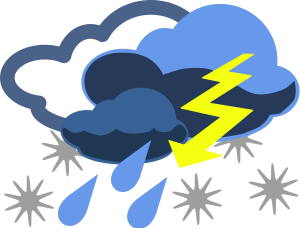
Climate conditions can unfavorably influence aerial work platform lifting exercises. They should be thoroughly considered both during the arranging and execution of a Boom lift or Scissor Lift. Unique endeavors may be obliged to guarantee sufficient cautioning is given to maintain a strategic distance from a sudden tempest upsetting a lift in progress.
WIND
A lot of judgment is obliged when assessing in the excessive wind, making it impossible to keep lifting operations stable. Most lift equipment makers have a few suggestions concerning the greatest admissible wind speed/blast, or how to derate the lift under breezy conditions, subsequent to their heap graphs accept no wind by any means.
Note: without makers’ particular composed counsel, genuinely consider putting off the lift if the wind speed/blast is in the scope of 15-20 mph (7-9 m/s). Over 20 mph (11 m/s), the lift must be scratched off. At the point when the stretching out operations have been put off because of high wind/blast conditions loads must be landed and secured, the boom must be stowed and the accompanying must be met before continuing aerial work platform operations.
Some of the issues to consider while operating on aerial work platform under windy weather conditions are
# The geometry and state of the load
Is there a large area exposed to wind loads? How troublesome will the load be to control if a blast of wind gets it?
# How high is the load to be lifted?
Wind speed generally increments with the increase in height.
# In-reverse steadiness
In-reverse steadiness can be an issue when the wind is from the front and the blast is high.
# Wind from behind a lift
Wind originating from the lift’s back can bring about the load to be blown far from it, expanding the range and diminishing the limit of lift equipment.
# Wind from the side of a lift
Wind coming from the side can put a load in side of the boom and pass the load over vertical; which, thus, can put an extra side burden on the boom.
# Operating a lift between structures
Operating an aerial work platform between buildings or process equipment under stormy conditions can be hazardous due to the “wind tunnel” effect. Under these conditions, a wind speed indicator (anemometer) fixed to the boom point is a good idea.
COLD WEATHER
Extremely cold weather can contrarily influence lift and aerial work platform operations. At the point when temperatures drop beneath 10oF, suitable thought ought to be made regarding stun stacking, lift hydraulics, and conceivable derating of the lift.

OTHER CLIMATIC CONDITIONS
Other climate conditions can make risky conditions for aerial work platform. Rain, haze, or snow could obscure the load, making lifting operations extremely risky. Moreover, compelling warmth, overwhelming rain, snowstorms, or even substantial snow whirlwinds can be diverting to those included in the lifting operation. It is imperative for an operator to stay concentrated on the lift until the load is safely landed, and the load is free. Amid awful climate, for example, rain, snow or mist, stop operation and slow the machine. Hold up until visibility enhances, before continuing operation.
Heavy rain, particularly if wind-driven, additionally can influence lift operations. Water can get into rubbing components (brakes, grasps, and so forth.) and render them inoperable. At the point under these conditions existing older friction-type lifts operators may need to “dry out” the brakes by daintily engaging the equipment to sufficiently deliver warmth in order to dry out the components.
Torcan Lift Equipment offers a wide range of safety-related training programs to meet your professional needs as well as the regulations of the Occupational Health and Safety Act. We also provide safety tips on demand for working on aerial work platform. For more detailed information
Visit: https://torcanlift.com
